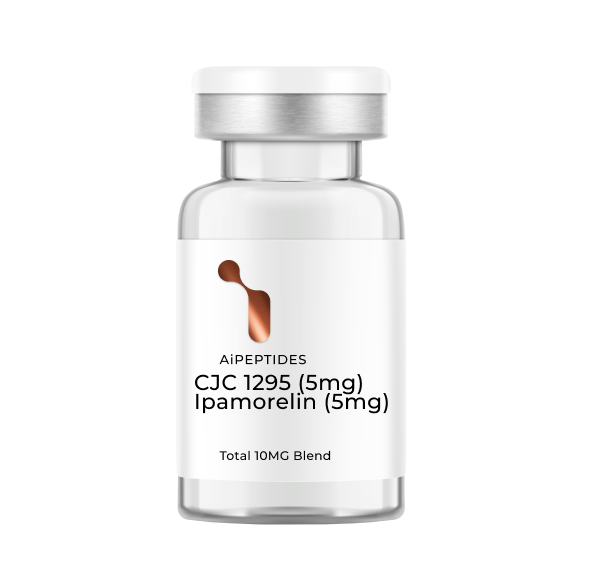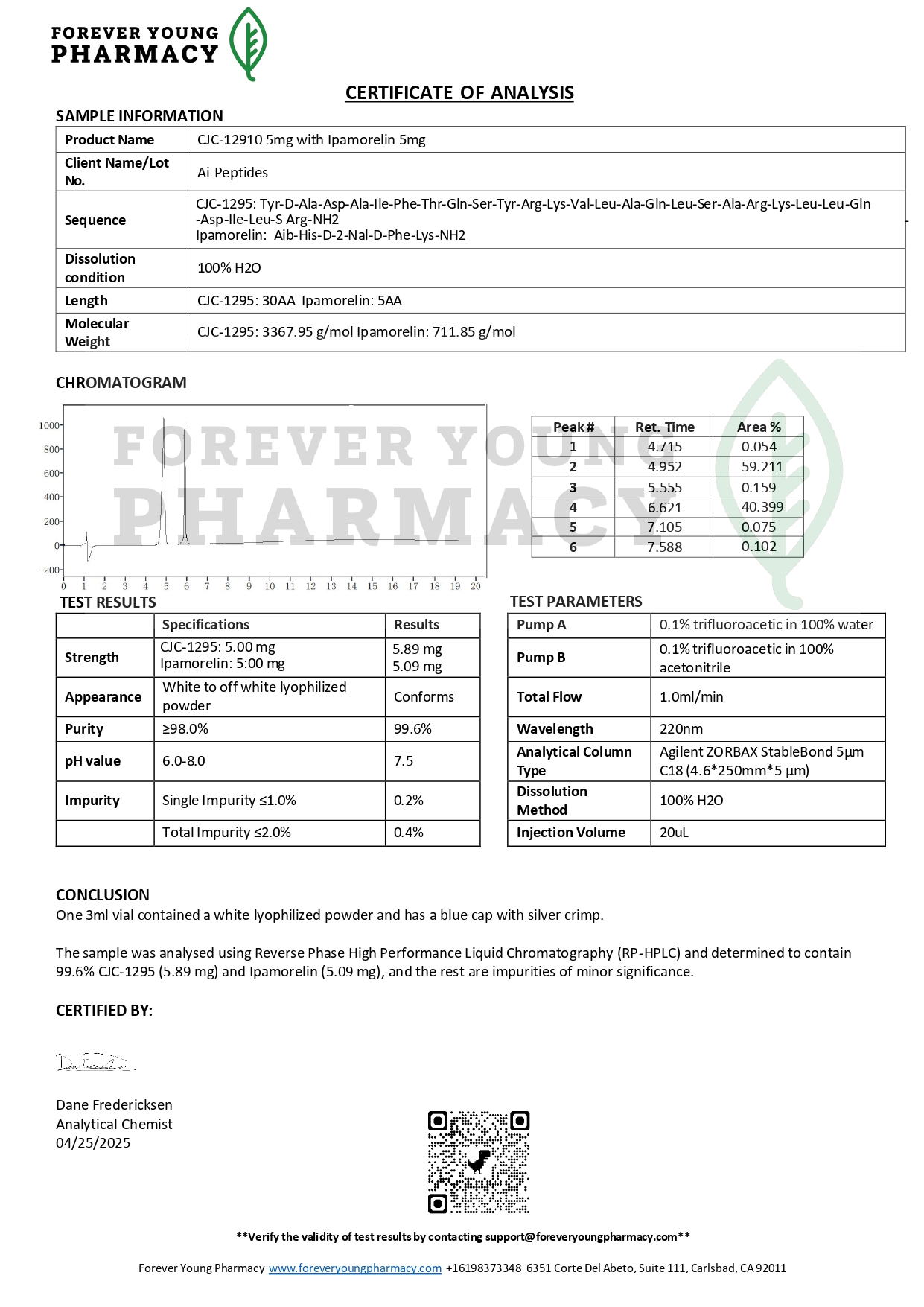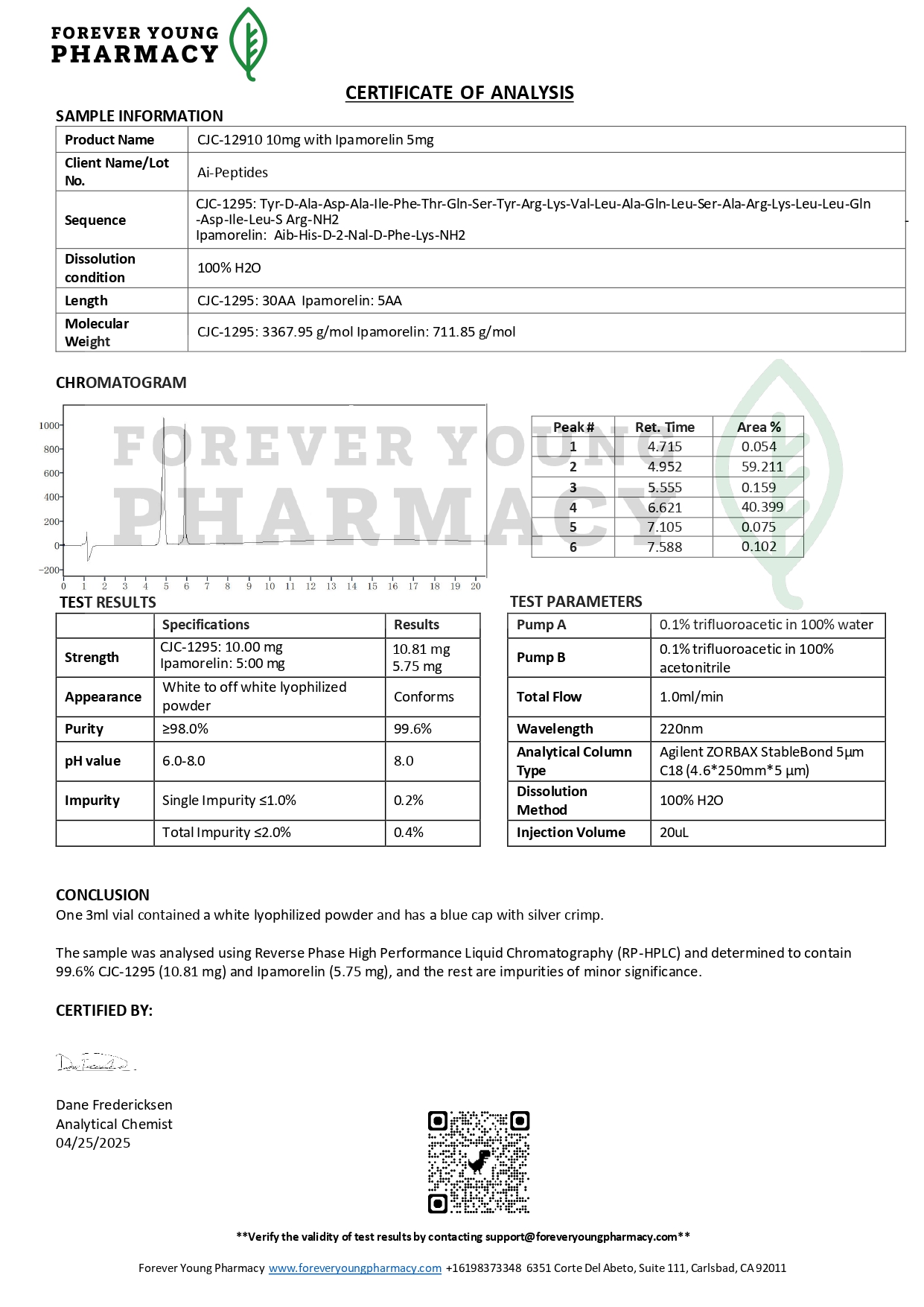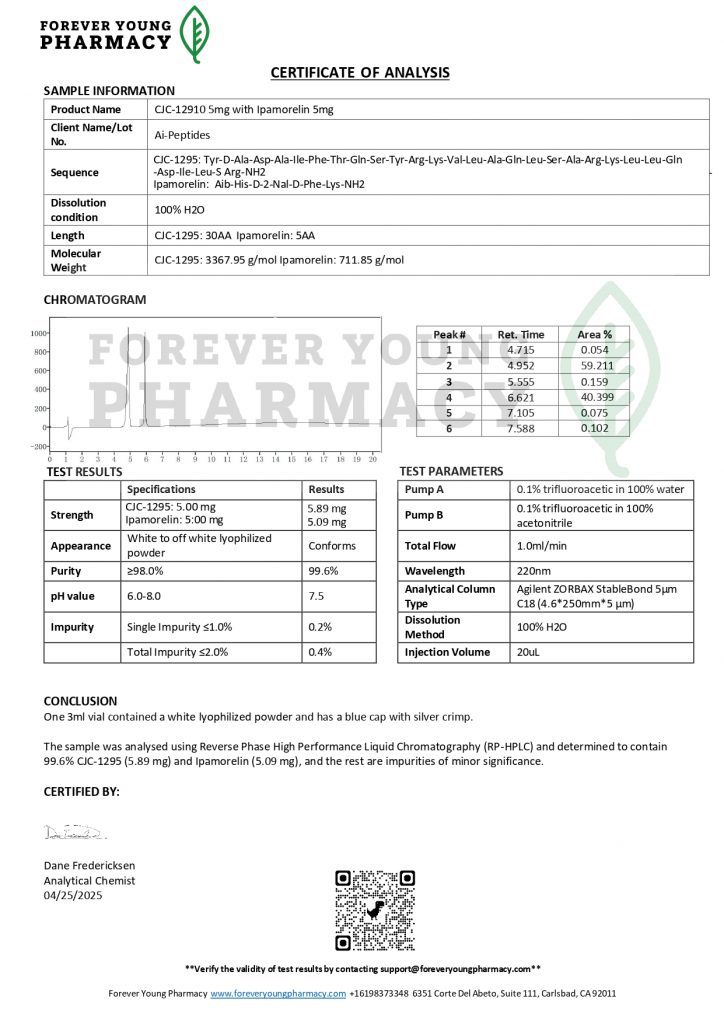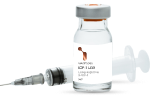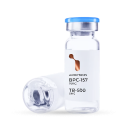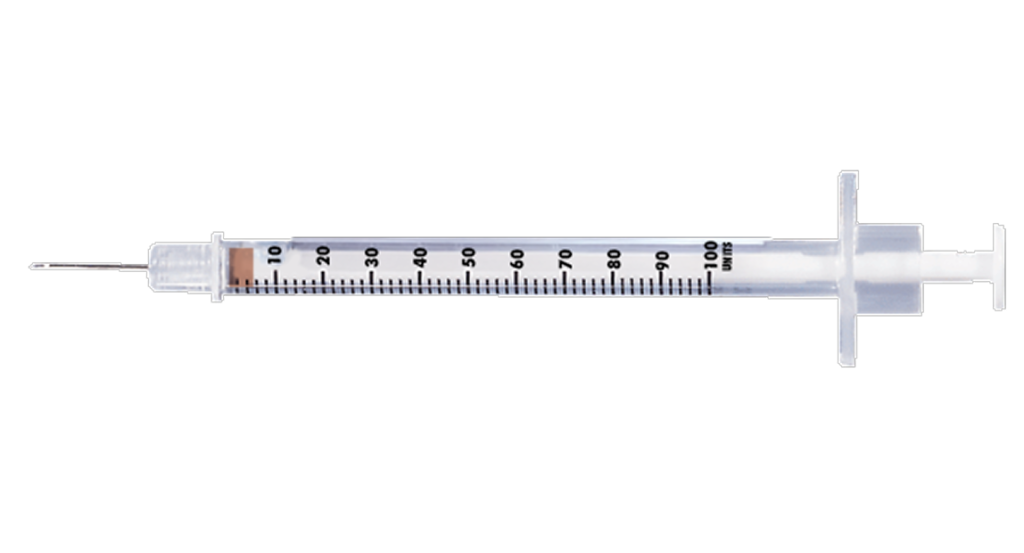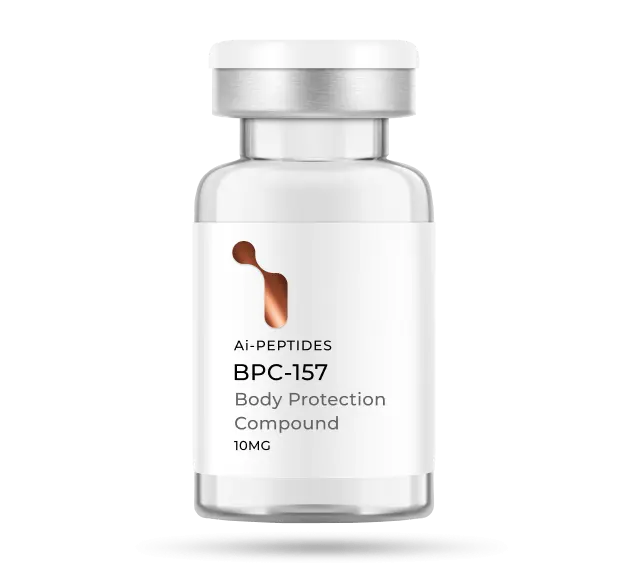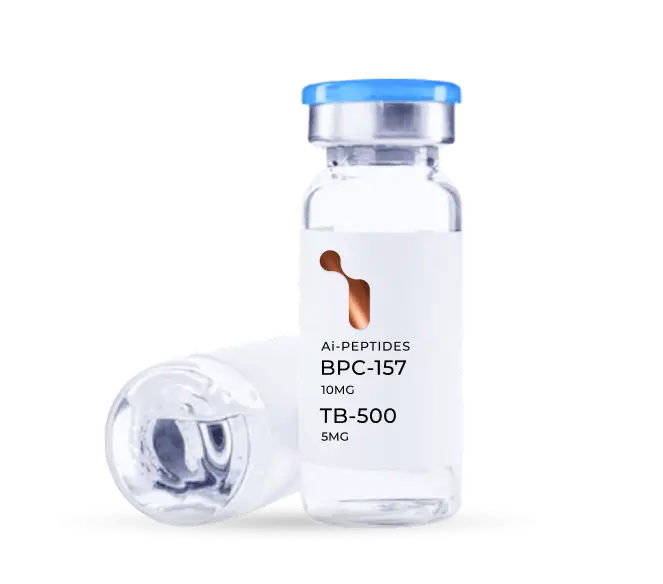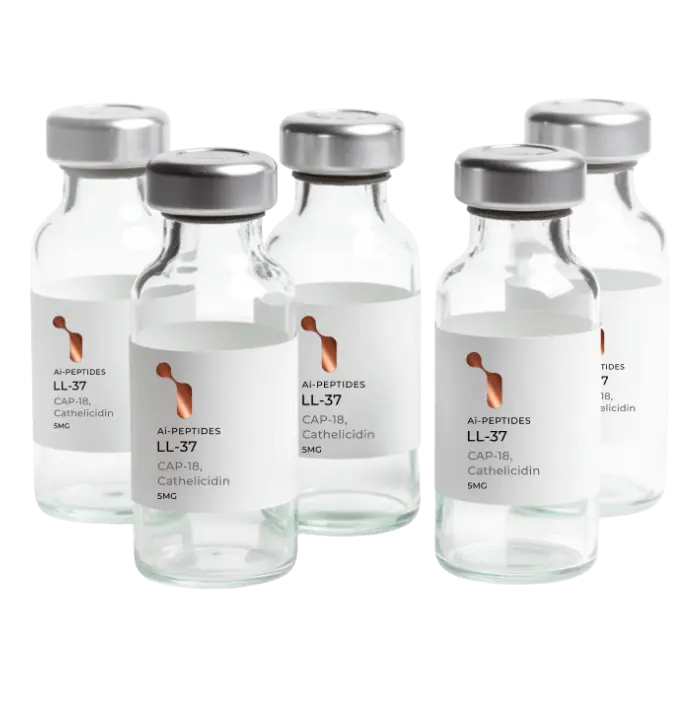CJC-1295 and Ipamorelin are often paired because they send two complementary signals to the growth-hormone (GH) axis. CJC-1295 is a GHRH-analogue (the body’s “release this now” message), while Ipamorelin engages the ghrelin/GHSR pathway (a distinct “go” signal). Together, they’re used to study pulsatile GH dynamics in one simple combo.
Why does that matter in research? Looking at both pathways at once lets labs explore questions around GH pulse size vs. frequency, downstream IGF-1 patterns, and broader readouts tied to body composition, recovery, and metabolic balance. Teams also compare single-pathway vs. dual-pathway tools to see how signals interact—timing, dose-response, and whether combined inputs produce different outcomes than either alone.
What sets our combo apart is clean, verified quality for each vial. Both CJC-1295 (5 mg) and Ipamorelin (5 mg) are identity-confirmed (e.g., mass spectrometry) and purity-checked by HPLC with ≥99% purity (typical). You receive lot-specific Certificates of Analysis (COAs) showing the actual test data—clear proof, not guesswork.
We focus on repeatable consistency. Specs are kept tight from batch to batch and every lot is tracked, so when you reorder you can match the same analytical fingerprint you liked before—useful for method development, comparisons, and follow-up work where consistency is as important as the initial result.
If you want a straightforward GH-axis pairing with transparent documentation and high purity, our CJC-1295 5 mg + Ipamorelin 5 mg set delivers exactly that—well-characterized material, clear COAs, and reliable performance for rigorous lab work.
